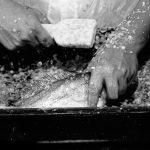How to Draw a Face: A Comprehensive Guide
Drawing a realistic and expressive face is a fundamental skill for any artist. While it may seem daunting at first, understanding the underlying proportions and structure of the human face can make the process much more manageable. This guide, updated with insights relevant to 2024 and 2025, will walk you through the essential steps, from basic construction to refining details, helping you to create compelling portraits.
Understanding Facial Proportions
Accurate facial proportions are the cornerstone of a believable portrait. Beginners often struggle with placing features correctly, leading to drawings that feel “off.” By understanding the general guidelines, you can create a solid foundation for your artwork.
The Basic Head Structure
Many artists begin by constructing the head using simple geometric shapes. A common approach involves starting with a circle to represent the cranium. This circle can then be divided into sections to guide the placement of features.
- Start with a Circle: Draw a circle, not necessarily perfect, as it will form the basic shape of the head. Ensure its height and width are roughly equal for a balanced start.
- Add the Jawline: From the bottom of the circle, draw lines to create the jaw and chin. The shape of the jaw can vary greatly, but a common starting point is to bring the lines down from the sides of the circle, creating a more egg-like or inverted pear shape. A common mistake is to have the jaw touch the sides of the initial circle; remember that the head is flatter on the sides.
- Establish Center Lines: Draw a vertical line down the center of the face to indicate the midline and a horizontal line across the middle of the circle to mark the eye line. These lines are crucial for ensuring symmetry.
Key Proportional Guidelines
Several established guidelines help artists place facial features accurately. These are general rules and can be adjusted based on individual anatomy and artistic style.
- Eyes are Halfway Down: The eye line is typically located at the horizontal center of the head, dividing it into two equal halves from the hairline to the chin. Many beginners mistakenly place the eyes too high.
- The “Five Eyes” Rule: The width of the face, from ear to ear, is generally about five times the width of one eye. This also means the space between the two eyes is roughly equal to the width of one eye.
- Nose Placement: The bottom of the nose typically aligns vertically with the inner corners of the eyes (tear ducts).
- Mouth Placement: The corners of the mouth often align with the pupils of the eyes. The distance between the nose and the mouth is generally about one-third of the distance between the nose and the chin. A common mistake is making the space between the bottom of the nose and the mouth line larger than the space between the mouth line and the chin, which can make the face look unnatural.
- Ear Placement: The top of the ears usually aligns with the brow ridge or the eye line, and the bottom of the ears aligns with the bottom of the nose.
- The Rule of Thirds: Some artists divide the face horizontally into three equal sections: from the hairline to the eyebrows, from the eyebrows to the bottom of the nose, and from the bottom of the nose to the chin.
Step-by-Step Drawing Process
Here’s a breakdown of how to approach drawing a face, incorporating the proportional guidelines:
Step 1: Construct the Basic Head Shape
Begin by drawing a circle for the cranium. Add the jawline and chin, ensuring the sides of the head are not perfectly flat against the circle. Draw your center vertical and horizontal lines.
Step 2: Mark the Eye Line
Draw a horizontal line across the middle of the circle. This is your eye line, a crucial guide for placing the eyes.
Step 3: Place the Eyes
On the eye line, mark the positions for the eyes. Remember the “five eyes” rule: the space between the eyes should be about the width of one eye. The inner corners of the eyes should align with the vertical center line of the face.
Step 4: Draw the Nose
Draw a vertical line from the center of the eye line down to the bottom of the head shape. The bottom of the nose will be placed on the horizontal line that is halfway between the eye line and the chin. The sides of the nose should align with the inner corners of the eyes.
Step 5: Sketch the Mouth
Draw a horizontal line for the mouth, typically placed about one-third of the way down from the nose to the chin. The corners of the mouth often align with the pupils of the eyes.
Step 6: Add the Ears
The ears are typically positioned between the eye line and the nose line, with their tops aligning roughly with the brow ridge and their bottoms aligning with the bottom of the nose.
Step 7: Refine the Features
Now, begin to refine the shapes of the eyes, nose, mouth, and ears. Pay attention to the subtle curves and forms. For the eyes, consider that the iris is usually partially covered by the eyelids. The lips have distinct shapes, with the top lip often having a subtle “M” shape and the bottom lip being fuller.
Step 8: Define the Hairline and Hair
The hairline is typically located about two-thirds of the way down from the top of the circle to the eye line. Draw the hairline and then add the mass of the hair, considering its overall shape and volume.
Step 9: Add Details and Refine the Shape
Continue adding details such as eyebrows, eyelashes, and the subtle contours of the face. Refine the jawline and chin, ensuring they connect smoothly to the rest of the head.
Shading and Adding Depth
Shading is what brings a drawing to life, giving it a sense of three-dimensionality. Understanding how light interacts with the face is key.
Understanding Light and Shadow
Think of the face as a 3D form. Light hitting a curved surface will create a gradual transition from highlight to shadow. Areas that turn away from the light source will be in shadow.
- Form Shadows: These are the shadows that occur naturally on the object itself as it curves away from the light. They have soft edges.
- Cast Shadows: These are shadows that an object casts onto another surface. They can have sharper edges.
Shading Techniques
- Hatching: Using parallel lines to build tone. Cross-hatching involves layering lines in different directions. Curved hatching can follow the form of the face.
- Smudging: Blending pencil marks with a finger, tortillon, or soft brush to create smooth transitions and soft shadows.
- Layering: Building up tones gradually by applying multiple layers of shading.
- Contrast: Don’t be afraid to use dark values (darks) and keep highlights clean to make the face “pop.”
Common Mistakes and How to Avoid Them
Even experienced artists make mistakes. Being aware of common pitfalls can help you improve more quickly.
- Starting with Details: Resist the urge to start with the eyes or other features. Begin with the overall head shape and proportions.
- Incorrect Eye Placement: Eyes are centered on the head, not too high up.
- Ignoring Proportions: Incorrectly sized or placed features are a common issue. Constantly refer to your guidelines.
- Flat Shading: Failing to consider the 3D form of the face leads to flat, unconvincing drawings.
- Overworking Details: Especially with hair, focus on the overall shape before getting lost in individual strands.
- Drawing the Jaw Incorrectly: Ensure the jawline connects naturally to the head shape and doesn’t just attach to the sides of the initial circle.
Practice and Further Learning
Consistent practice is the most crucial element in mastering face drawing.
- Use References: Study photographs and real people. Observe how features change from different angles.
- Draw from Different Angles: Practice drawing faces from the front, side profiles, and three-quarter views.
- Study Anatomy: Understanding the underlying bone and muscle structure can significantly improve your drawings. Books like Michel Lauricella’s “Morpho: Anatomy for Artists” series offer excellent resources.
- Experiment with Styles: Try different approaches, from realistic to stylized, to find what works best for you.
- Learn from Others: Watch tutorials and analyze the work of artists you admire.
By consistently applying these principles and practicing diligently, you will see a marked improvement in your ability to draw realistic and captivating faces.






